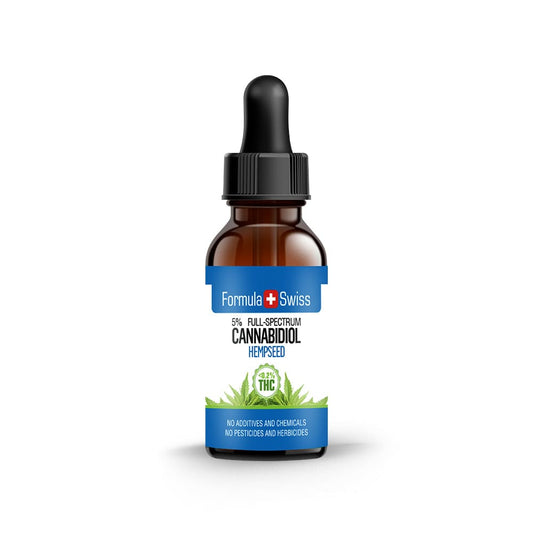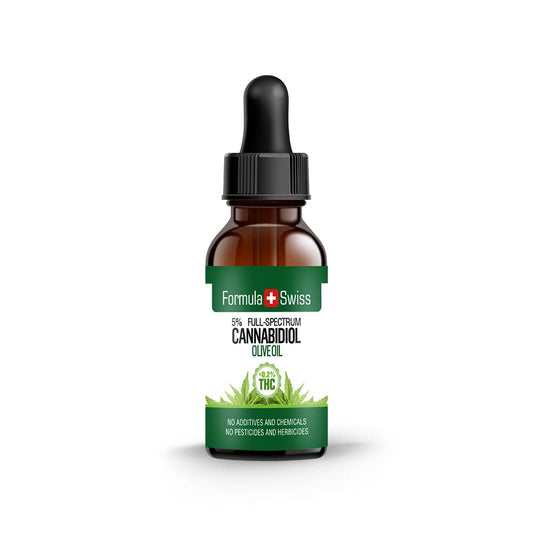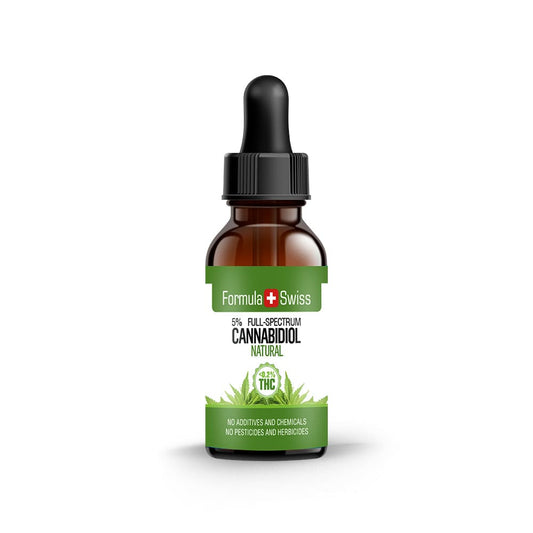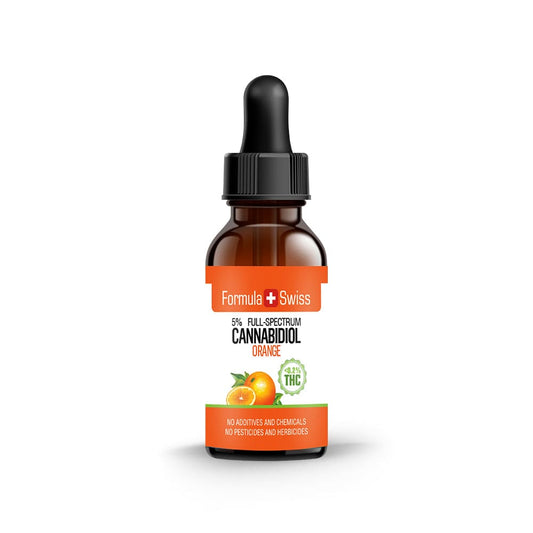One interesting cannabinoid that's caught my attention lately is delta-9 tetrahydrocannabutol, or delta-9 THCB. It isn't as well-known as THC—the cannabinoid most people immediately think of with cannabis—but structurally, it's pretty similar.
What sets delta-9 THCB apart is its slightly longer alkyl side chain, a subtle chemical tweak that might seem minor, yet can influence how it interacts with cannabinoid receptors.
Throughout my decade working in cannabis and hemp, I've come across many intriguing discoveries like this, each one reshaping how we understand cannabinoids. Delta-9 THCB highlights just how small molecular changes can have significant effects.
As I explore delta-9 THCB further, I'm excited to dig deeper into what makes it unique and to better understand its role in the expanding world of hemp-derived compounds.
Save up to 30% when you order your CBD oil today
Key takeaways
- Delta-9 THCB is a rare cannabinoid structurally similar to THC, distinguished by its longer alkyl side chain.
- This structural difference allows delta-9 THCB to bind more strongly to CB1 receptors compared to THC.
- Users often describe delta-9 THCB effects as clearer and more uplifting than those of other cannabinoids.
- Research into delta-9 THCB remains preliminary, highlighting the ongoing exploration of its properties.
- Discoveries like delta-9 THCB expand understanding of the cannabis plant’s diverse cannabinoid profile.
This article is provided for informational purposes only and does not relate to any of the products available in our webshop. For more information, please see our full disclaimer.
Cannabinoids and their diverse spectrum
The study of the cannabinoid spectrum in cannabis plants is truly fascinating. It shows a complex web of chemical interactions. This complexity is now a key area of study in botanical science.
Looking beyond THC and CBD, we find a world of diverse cannabinoids. This opens up new possibilities for cannabis-based products. It also meets a variety of preferences, pushing the boundaries of cannabis research and product development.
Researchers have identified more than a hundred distinct cannabinoids in the cannabis plant, each interacting with the body in unique ways. This diversity contributes to a more nuanced understanding of the plant’s properties and potential.

Historically, attention has largely centred on THC and CBD. However, there is increasing interest in lesser-known cannabinoids as the industry explores new directions. This shift reflects a broader effort to develop products tailored to specific effects or functional purposes, moving beyond a one-size-fits-all approach.
As knowledge deepens, it becomes clear that the full spectrum of cannabinoids may shape future developments in various sectors. Their potential to influence innovation and scientific inquiry continues to gain traction on a global scale.
Unveiling delta-9 THCB (delta-9 tetrahydrocannabutol)
As I explore cannabinoid discoveries, delta-9 THCB is a key find in cannabis science. Delta-9 tetrahydrocannabutol (delta-9 THCB) has attracted scientific attention for its strong binding affinity and partial agonist activity at CB1 receptors, comparable to that of THC, as noted in the Journal of Natural Products.
While early findings suggest functional similarities, further research is required to clarify its distinct characteristics and potential applications. Interest in delta-9 THCB goes beyond just learning. It could change how cannabis is approached scientifically. Researchers are actively exploring new insights into its role, which could lead to important discoveries.
Delta-9 THCB highlights the remarkable diversity of the cannabis plant and underscores the importance of continued research. Each new cannabinoid discovery expands our understanding and invites further scientific exploration.
The growing interest in delta-9 THCB is prompting deeper inquiry and discussion within the research community. Its identification represents more than just a novel compound—it reflects the ongoing evolution of cannabinoid science and its expanding frontiers.
Order and get up to 30% off your CBD oil
The molecular structure of delta-9 THCB
Delta-9 tetrahydrocannabutol (delta-9 THCB) is a naturally occurring cannabinoid identified in Cannabis sativa. Structurally, it closely resembles delta-9-tetrahydrocannabinol (Δ⁹-THC), differing primarily by possessing a butyl side chain instead of a pentyl one.

This subtle variation influences its interaction with cannabinoid receptors, particularly CB1 and CB2, where delta-9 THCB demonstrates notable binding affinity.
The chemical structure of delta-9 THCB was elucidated through advanced spectroscopic techniques, including Nuclear Magnetic Resonance (NMR) and High-Resolution Mass Spectrometry (HRMS).
These analyses confirmed its identity as a distinct cannabinoid, contributing to the expanding catalogue of phytocannabinoids.
Exploration of delta-9 THCB's effects and potential
I've looked at how it works with CB1 receptors. This is because of the interesting stories from users and the growing field of cannabinoid research. It shows how delta-9 THCB might differ from other cannabinoids like THC.
Researching the effects of cannabinoids is important. It helps deepen understanding of new compounds like delta-9 THCB. The aim is to determine whether delta-9 THCB presents distinguishing features within the cannabinoid spectrum.
| Aspect | Delta-9 THCB | THC |
|---|---|---|
| Interaction with CB1 receptors | Stronger affinity | Lesser affinity |
| Psychoactive potentials | Possibly enhanced | Well documented |
| Applications | Under research | Extensively studied |
As I explore delta-9 THCB, I aim to build a detailed picture of it. I compare it to known cannabinoids to understand how it might fit within the broader field of cannabinoid research. Uncovering delta-9 THCB’s characteristics is both fascinating and significant in the study of hemp-derived compounds.
Comparing delta-9 THCB with other cannabinoids
The cannabis plant contains a wide array of cannabinoids, each with distinct characteristics. Comparisons among delta-9 THCB, THC, and CBD help highlight their structural differences and how these may influence their interactions with the body.

Understanding how these compounds function individually and in combination is central to advancing cannabinoid research.
Delta-9 THCB shares structural similarities with THC but features a butyl side chain instead of a pentyl one. This slight variation may affect how it interacts with cannabinoid receptors. While delta-9 THCB and THC are thought to influence similar biological pathways, THC has been more extensively studied, leaving delta-9 THCB’s profile less defined.
| Cannabinoid | Chemical structure | Psychoactive |
|---|---|---|
| THC | Pentyl side chain | Yes |
| Delta-9 THCB | Butyl side chain | Assumed to be milder than THC |
CBD or cannabidiol, on the other hand, differs notably from THC in its effects and receptor interactions. It does not produce the same psychoactive responses. Compared to THC, delta-9 THCB may exhibit a milder profile, though more studies are needed to clarify its characteristics.
In this context, delta-9 THCB appears to occupy a space between the well-documented effects of THC and the non-intoxicating nature of CBD. This distinction positions it as a potentially unique compound within the broader spectrum of cannabinoids under scientific exploration.
Order CBD oil now and save as much as 30%
The extraction of delta-9 THCB
The extraction of delta-9 tetrahydrocannabutol (delta-9 THCB) typically involves advanced chromatographic techniques and precise isolation methods. Found in trace amounts within cannabis plants, delta-9 THCB extraction requires meticulous attention to detail to achieve sufficient purity for analytical and research purposes.
Advanced extraction techniques such as supercritical CO₂ extraction or liquid chromatography paired with mass spectrometry (LC-MS) are commonly employed.
Supercritical CO₂ extraction, known for its efficiency and environmentally friendly profile, selectively targets cannabinoids like delta-9 THCB by adjusting temperature and pressure parameters, allowing researchers to isolate the cannabinoid without compromising structural integrity.

Subsequent purification processes, including high-performance liquid chromatography (HPLC), further refine the extracted material, isolating delta-9 THCB from closely related compounds.
Given its rarity and the complexities involved in extraction, delta-9 THCB remains predominantly accessible for research settings, with ongoing studies aimed at better understanding its properties.
Future directions and potential of delta-9 THCB in cannabis products
Exploring the future of delta-9 THCB in cannabis products is exciting. I've observed how delta-9 THCB-rich products could influence the market. They hold the potential to introduce new opportunities within the cannabis industry.
Developing innovative delta-9 THCB products is not merely about differentiation. It's about exploring functional roles and scientific novelty. Delta-9 THCB's interaction with CB1 receptors presents intriguing possibilities for research and development.
- Development of bespoke delta-9 THCB formulations tailored for specific applications
- Integration of delta-9 THCB with other cannabinoids to explore potential synergistic effects
- Advancement in the bioavailability of delta-9 THCB through nanotechnology
Current research efforts may lead to new insights. Continuing to follow these studies is essential, as they highlight emerging avenues for cannabinoid innovation and scientific exploration.
Understanding the safety and risks of delta-9 THCB
I've been closely following the rise of delta-9 THCB, a lesser-known cannabinoid. It's important to understand both its scientific relevance and any associated risks. Exploring delta-9 THCB’s safety profile and possible long-term effects is essential for informed regulatory decisions.
Studies are currently examining how delta-9 THCB interacts with biological systems, focusing particularly on safety and potential side effects. With growing interest in emerging cannabinoids, thorough research ensures their safe and responsible study. Cannabinoids can have complex effects, making detailed studies crucial.
- Analysis of acute effects of delta-9 THCB on cognitive and motor functions
- Investigation into the general tolerability of delta-9 THCB
- Longitudinal studies on the long-term implications of delta-9 THCB exposure
While delta-9 THCB presents interesting opportunities, understanding associated risks remains essential. Ongoing research will help develop comprehensive safety guidelines for industry stakeholders and scientific institutions.

Advancing cannabinoid research necessitates considering the implications of prolonged exposure to delta-9 THCB. Understanding potential long-term impacts could guide future applications and highlight areas needing caution.
In conclusion, studying delta-9 THCB’s safety and potential risks is an evolving process. Increased research will enable better understanding, aiding regulatory compliance and informed scientific engagement within the cannabinoid sector.
The growing market for rare cannabinoids and its future
The market for rare cannabinoids is rapidly expanding, becoming a significant segment within the cannabis industry. This rise is largely driven by increasing interest in novel cannabinoids such as delta-9 THCB, as stakeholders seek innovative products and scientific discoveries.
Research into rare cannabinoids, including delta-9 THCB, continues to gain momentum, highlighting their relevance in a wide range of studies. As scientific studies advance, they offer deeper insights into the versatility and broader possibilities of these lesser-known compounds.
Looking ahead, the continued exploration and regulated integration of rare cannabinoids like delta-9 THCB are likely to shape the future landscape of the cannabis industry, paving the way for innovation and responsible development.
Personal perspective
As someone who’s spent a significant amount of time exploring hemp cultivation and cannabinoids, I find the discovery of delta-9 tetrahydrocannabutol (delta-9 THCB) genuinely intriguing.
What stands out to me about delta-9 THCB is its distinct structure, especially its longer alkyl side chain, which adds yet another dimension to our understanding of cannabinoids beyond the more familiar CBD and THC.
Each discovery like this reminds me that our knowledge is always evolving, prompting those of us in the industry to rethink and broaden our perspectives continuously.
From my journey in cannabinoid research, I've learned how important it is to remain open-minded and curious. Delta-9 THCB is still relatively new territory, and that emphasises how dynamic this field is.
It motivates me to keep digging deeper, staying engaged with new developments, and exchanging ideas with colleagues so we can all better understand how cannabinoids like delta-9 THCB might shape the future of hemp-based products.
Don’t miss out—save up to 30% when you purchase CBD oil today
Frequently asked questions
What is delta-9 THCB (delta-9 tetrahydrocannabutol)?
Delta-9 THCB, or delta-9 tetrahydrocannabutol, is a cannabinoid found naturally in the cannabis plant. It has been observed to bind effectively with the body's CB1 receptors. Delta-9 THCB features a distinct chemical structure, prompting researchers to examine its properties and interactions.
What makes the cannabis plant complex?
The cannabis plant is chemically diverse, containing over 100 different cannabinoids. Each cannabinoid has unique chemical characteristics. This diversity supports continued research and a range of potential applications.
Why are researchers exploring beyond THC and CBD?
Researchers are increasingly focusing on lesser-known cannabinoids like delta-9 THCB. With more than 100 identified cannabinoids, there is considerable scientific interest in their distinct features. This research contributes to expanding the scientific understanding of the plant.
How does delta-9 THCB's chemical structure differ from THC?
Delta-9 THCB differs chemically from THC by having a butyl side chain instead of THC's pentyl side chain. This structural variance may influence its binding interaction with CB1 receptors. Such differences are of interest in molecular research.
What is special about delta-9 THCB's affinity for CB1 receptors?
Delta-9 THCB shows a strong binding affinity for CB1 receptors, which has made it a focus of cannabinoid receptor studies. This interaction is one of the reasons it is receiving increased scientific attention.
How does the effect of delta-9 THCB compare to THC?
Delta-9 THCB may exhibit differing effects due to its receptor interaction profile. Early anecdotal reports describe its influence as distinct from THC. However, controlled research is needed to clarify these impressions.
In what ways does delta-9 THCB differ from CBD?
Delta-9 THCB is reported to have psychoactive properties, unlike CBD, which is non-intoxicating. Research continues to define the characteristics and behaviour of delta-9 THCB more clearly.
What is the role of delta-9 THCB in scientific research?
Delta-9 THCB is being examined for its biological activity and possible relevance to cannabinoid research. While studies remain limited, interest in this compound is growing within scientific circles. Ongoing investigations aim to clarify its interactions and properties.
What are the challenges in extracting delta-9 THCB from cannabis?
Delta-9 THCB is found in small quantities within the cannabis plant. Extracting it requires specialised equipment and methods to isolate and study it effectively in a controlled setting.
What techniques are used to ensure the purity of delta-9 THCB during extraction?
Chromatographic methods are commonly used to isolate and purify delta-9 THCB. These approaches help maintain high purity levels suitable for research applications.
What innovations are expected in delta-9 THCB-rich products?
Future innovations in delta-9 THCB-rich products may focus on leveraging its unique structure and receptor interactions. These developments will depend on further scientific validation and regulatory assessment.
Are there ongoing investigations into the potential of delta-9 THCB?
Research into delta-9 THCB is ongoing, with efforts directed at understanding its properties and applications. These studies are expected to yield a more informed view of its place within the broader cannabinoid profile.
What does current research say about the safety profile of delta-9 THCB?
Research into the safety of delta-9 THCB is in early stages. Scientists are evaluating short-term effects and possible long-term outcomes to establish a clear safety profile.
What are the potential long-term implications of delta-9 THCB exposure?
The long-term effects of delta-9 THCB have not yet been fully established. Current investigations are aimed at identifying any chronic impacts that may influence future regulatory decisions.
How is the market for rare cannabinoids like delta-9 THCB growing, and what does its future look like?
The market for rare cannabinoids such as delta-9 THCB is expanding, driven by interest in diverse cannabinoid profiles. This trend suggests future product development and ongoing scientific inquiry will remain active areas.
What are minor cannabinoids and why are they important?






